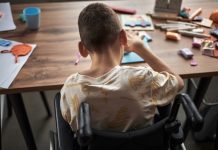Christel Wolthoorn, Managing Director of LovedBy Design, examines how the education sector dealt with COVID disruption and the work that remains
For considerable time, both the education sector and the institutions underpinning it have been aware that disruption was inevitable. Prior to the pandemic, it was easy to dismiss this disruption as something merely coming down the tracks; a future challenge rather than something to be addressed with any urgency.
When the virus hit, therefore, the rapid changes that took place in education were dictated by requirement. This was not an opportunity to analyse the student experience, or to examine the business models of education, but rather an intense period of urgent adaptation.
Today we are seeing that, despite the best efforts by educational institutions to adjust to the ‘new normal,’ there is still a long way to go.
I’ll examine what true disruption in the education space would look like – and why the post-COVID world offers a vital opportunity to rethink, re-examine and reform.
Current business models of education are flawed
As it stands, the education sector is no longer fit for purpose, nor has it been for some time. This is down to a number of reasons.
Firstly, the structuring of our current system separates its two most important components: business operations and the school curriculum. At a fundamental level, this lack of integration makes it extremely difficult to implement large-scale systemic changes, and increases pre-existing inequalities.
Secondly, education in today’s society remains largely predicated on the idea that education is a single, defined period in a young person’s life, as opposed to a life-long process. But this is simply no longer the case. Our rapidly-evolving job market, along with the prospect of future roles that don’t even exist yet, mean that people of all ages are interested in enhancing their skills. Many are acknowledging, too, that life-long learning is a reality if we are to adjust to the challenges of society, and to tackle large-scale problems such as social injustice and the environmental crisis.
Lastly, this remains a sector in which pen and paper are still king. By definition, this makes the development and delivery of educational content a one-way process, and with students experiencing constant teacher changers over the course of their school experience – it makes educational outcomes and the effectiveness of the learning content difficult to properly measure over time.
Institutions need to understand changing behaviours and motivations
Providers and institutions must also understand that our behaviours are evolving. Some organisations we have been working with have already come a long way in recent years, but the world they exist in is changing even faster. Not only are we redefining why (and when) we want to learn, we also have unique requirements when it comes to how we learn.
Today’s learners seek a more individualised direction, moving away from a mandated curriculum with standardised measurements, and towards a more personalised learning experience. Done well, this type of personalised learning is about giving a learner what they need, in a style that suits them.
Lockdown accelerated digital learning – but there’s still a long way to go
The arrival of lockdown catalysed a rapid transition to widespread virtual teaching. By April 2020 almost 1.6 billion children were out of school, according to the World Economic Forum.
But although COVID provided the impetus for institutions to begin a long overdue overhaul of analogue processes, we still have a long way to go.
We’re yet to see a system that blends online and offline learning in an integrated way. The key challenge here is that the online platforms that enable virtual education are provided by third parties. These providers generally have limited insight into how their technology intersects with the role the educational institution itself is playing, and still rely heavily on teacher assistants and parents to implement them correctly.
In order to design solutions for better learning outcomes, it’s crucial that providers understand how their technology is being used – whether the experience is consistent across the institution, for instance, and whether it is being used across faculties or in isolation. Without understanding a platform’s application, it is very difficult to measure efficacy for the end user.
Education bodies can take actions to improve right now
As with any transition, all education bodies – from universities, to language schools, to online providers – need to be assessing the experience of the end user. What are the learning requirements and motivations of your students? Are they being met? What are the systems, tools and processes in place, and how are they designed to support the learner? Are you taking full advantage of digital technology?
Working within a system which has historically been driven by regulation, and thus remained focused on existing norms and values, it can be difficult to find the perspective to pinpoint the changes that need to be made. At LovedBy, we can help facilitate this process. It’s our role to introduce an external perspective, helping education bodies think differently about their interactions with learners.
To give an example, for the last two years we have been working with a major company in the academic publisher and assessment organisation space. Having helped the business navigate its way through the height of the pandemic, we’re now beginning a process of evaluating the opportunities the organisation is faced with as a result, and assessing how to take advantage of some of those opportunities.
Of course, there are many education providers around the world facing similar challenges and opportunities right now. Although disruptive, COVID has kickstarted a movement towards democratisation in the sector, across many new platforms and formats. This is an exciting moment, but it also means that traditional providers can no longer rely on brand reputation alone to carry them through.
To become truly future-proofed, education must adopt a systems-thinking approach, designing interlinked outcomes that suit today’s learners – of all ages and all backgrounds. Now is the time to be creative, and to move beyond our now outdated structure.











